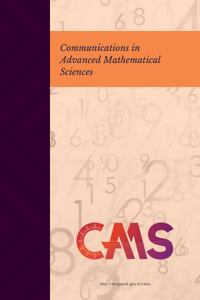Regularity of Linear Systems of Differential Equations on the Axes and Pencils of Quadratic Forms
Regularity of Linear Systems of Differential Equations on the Axes and Pencils of Quadratic Forms
It is considered linear systems of differential equations and investigated questions of regularity of these systems. To explore the regularity it is comfortable to use quadratic form whose derivative with respect to the adjoint system is positive definite. Sometimes it is possible to find such a quadratic form, the derivative of which with respect to the system is non-negative. There are examples showing that in this case we can't say anything about the exponential dichotomy of this system (that is, its regularity). The question arises whether it is possible to combine a certain set of quadratic forms to get such a form, the derivative of which with respect to the system is positive definite. This question is similar to the question that arises in the theory of control: having a set of certain data about an object, can one say something about this object as a whole. It turns out that this is possible, only a set of these quadratic forms should be special, in some sense complete. In the presented article the authors propose to write it with the help of some combination of specific symmetric matrices $S_1, S_2, \dots$ . So we have a quadratic form \[V_{p} =p_{1} \left\langle S_{1} \left(t\right)x,x\right\rangle +p_{2} \left\langle S_{2} \left(t\right)x,x\right\rangle + \dots +p_{k-1} \left\langle S_{k-1} \left(t\right)x,x\right\rangle +\left\langle S_{k} \left(t\right)x,x\right\rangle\] It is proved that the derivative of this quadratic form is positive definite for sufficiently large parameters $p_1, \dots, p_{k-1}$. The results are illustrated by examples.
Keywords:
Adjoint system, Quadratic form Regular, Symmetric matrices, Weakly regular,
___
- [1] Yu. A. Mitropolsky, A. M. Samoilenko, V. L. Kulik, Dichotomies and Stability in Non-Autonomous Linear Systems, Taylor&Francis, London, 2003.
- [2] V. Kulyk, D. Poczko, Some conditions of regularity of linear extensions of dynamical systems with respect to selected variables, Nonlinear Anal. Model. Control, 19(4) (2014), 602-610.
- [3] V. L. Kulyk, N. V. Stepanenko, Alternating Lyapunov’s functions in the theory of linear extensions of dynamical systems on a torus, Ukrainian Math. J., 59(4) (2007), 546-562.
- [4] V. L. Kulyk, G. N. Kulyk, N. V. Stepanenko, Addition of weakly regular linear extensions of dynamical systems to regular, Almaty, 11(1) (2011), 74-86.
- ISSN: 2651-4001
- Yayın Aralığı: Yılda 4 Sayı
- Başlangıç: 2018
- Yayıncı: Emrah Evren KARA
Sayıdaki Diğer Makaleler
Solving FIDEs by Using Semi-Analytical Techniques
Ahmed A. HAMOUD, Kirtiwant P. GHADLE, Nedal M. MOHAMMED
Computable Proximity of $\ell_1$-Discs on the Digital Plane
James F. PETERS, K. KORDZAYA, İ. DOCHVİRİ
On the Bicomplex $k$-Fibonacci Quaternions
Characterizations of Hayashi-Samuel Spaces via Boundary Points
Shyamapada MODAK, Sk SELİM, Md. Monirul ISLAM
Regularity of Linear Systems of Differential Equations on the Axes and Pencils of Quadratic Forms
Viktor KULYK, Ganna KULYK, Nataliya STEPANENKO
Delay Differential Equations in Sequence Spaces
Luis Gerardo MÁRMOL, Carmen Judith VANEGAS
On the Cohomology of Topological Semigroups
Maysam MAYSAMİ SADR, Danial BOUZARJOMEHRİ AMNİEH
